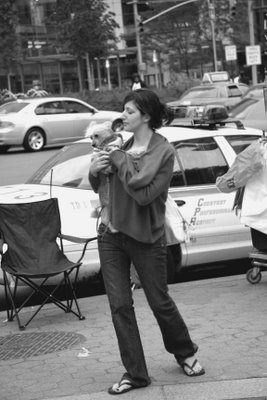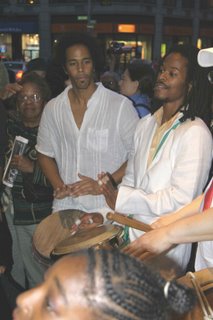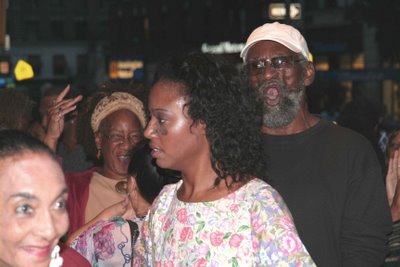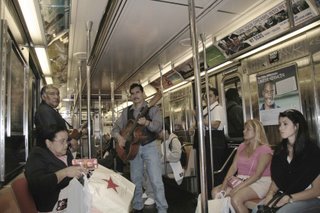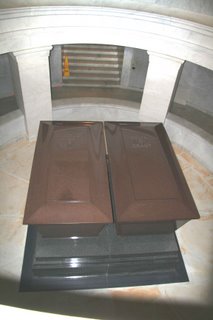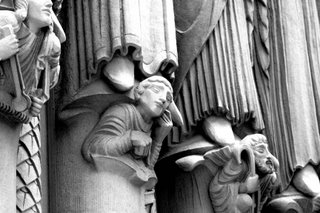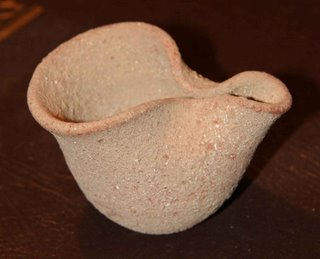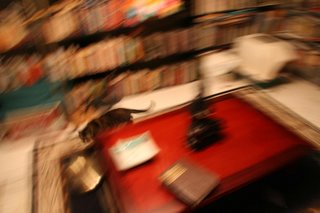On Sunday, I visited a friend who is an instructor in iaido. Iaido (pronounced "ee-eye-doe") is the Japanese martial art of drawing the long sword, attacking one's opponent (real or imagined) and replacing the sword in its scabbard.
I hadn't seen Dave in half a year. He has Parkinson's disease, and I was shocked and saddened by how much the illness had progressed in the six months since my last visit. His hand tremors are much more pronounced, and whereas he could control them to some extent in the past, he has now almost completely lost that control.
He walks in a shuffle, supported by a cane.
He is in his early sixties but moves with the stiffness and uncertainty of a much older man.
We met in a school gym where he teaches iaido on Sundays.
He was instructing one of his students, who was practicing
kata, or forms, about 30 feet away from us in the middle of the gym floor.
The student, clad in a black
gi, walked with a pronounced limp and it looked as if he was wearing a sock on his right foot. His left arm appeared to be in a sling.
Dave beckoned him closer to correct a technical flaw.
It was only as the student approached that I could see that what I thought was a sock was actually a prosthetic leg. His arm was indeed in a sling, not because it was broken but because it was withered and paralyzed.
Yet the focus in this man's eyes unmistakably conveyed the fact that he had conquered his handicaps, which I was told were the result of a motorcycle accident at high speed, and had thoroughly integrated them into his life.
In addition to iaido, I learned that he is an accomplished
karateka, or karate practitioner, and is scheduled to compete in kata and free-sparring at a tournament this weekend.
As Dave explained the technical point, he used his cane as a sword. His movements were crisp and precise, and during the execution of his technique, there was no perceptible tremor in his sword hand.
As I said goodbye to Dave and his student and left the gym, I was almost ashamed at the weight I had given to certain health circumstances in my own life, which in the greater scheme of things really aren't roadblocks at all.
The mind sets the tempo and calls the shots.


